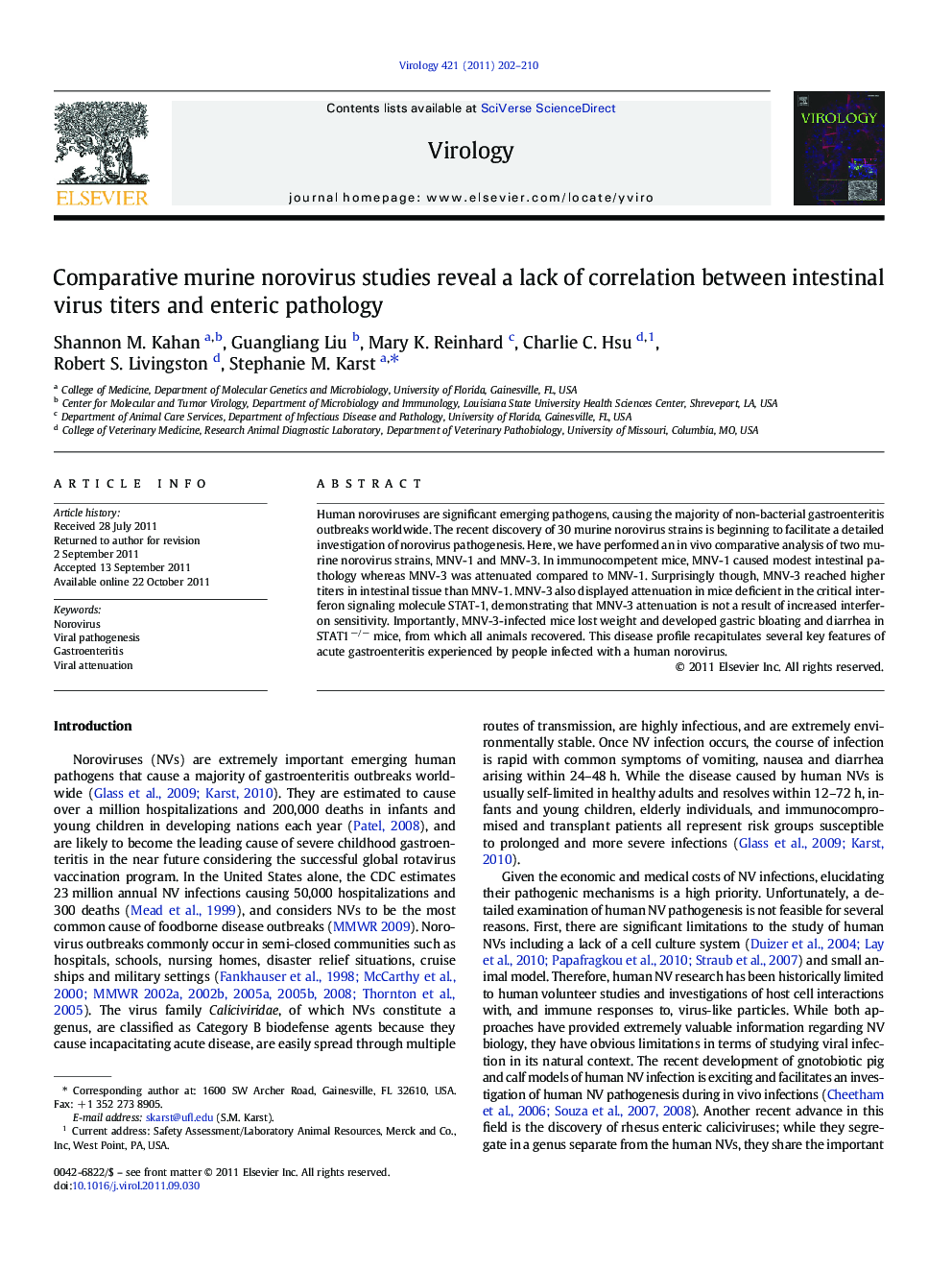| Article ID | Journal | Published Year | Pages | File Type |
|---|---|---|---|---|
| 3424663 | Virology | 2011 | 9 Pages |
Human noroviruses are significant emerging pathogens, causing the majority of non-bacterial gastroenteritis outbreaks worldwide. The recent discovery of 30 murine norovirus strains is beginning to facilitate a detailed investigation of norovirus pathogenesis. Here, we have performed an in vivo comparative analysis of two murine norovirus strains, MNV-1 and MNV-3. In immunocompetent mice, MNV-1 caused modest intestinal pathology whereas MNV-3 was attenuated compared to MNV-1. Surprisingly though, MNV-3 reached higher titers in intestinal tissue than MNV-1. MNV-3 also displayed attenuation in mice deficient in the critical interferon signaling molecule STAT-1, demonstrating that MNV-3 attenuation is not a result of increased interferon sensitivity. Importantly, MNV-3-infected mice lost weight and developed gastric bloating and diarrhea in STAT1−/− mice, from which all animals recovered. This disease profile recapitulates several key features of acute gastroenteritis experienced by people infected with a human norovirus.
